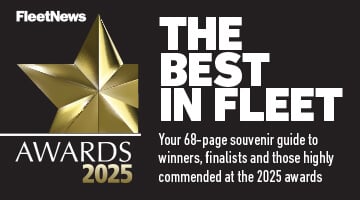Fleets Informed

Q&A from AA DriveTech
22/06/2017 in AA DriveTech

A company's responsibility to employees spelt out
Follow the three pillars of road safety if you wish to avoid falling foul of the law
What responsibilties do employers have for staff who drive for business?
The Health and Safety at Work Act 1974 requires employers to take appropriate steps to ensure the health and safety of their employees and others who may be affected by their activities when at work.
“This includes the time when they are driving or riding at work, whether this is in a company or hired vehicle, or in the employee’s own vehicle.”
The Management of Health and Safety at Work Regulations 1999 requires “the risk assessment to be reviewed periodically to ensure it remains valid. Employers should consider the risks to employees on the road in the same way as for those in a workplace.”
For clarity, health and safety law does not apply to drivers commuting to work; but many commuters are killed each year.
We believe companies should therefore consider a corporate and social responsibiltity (CSR) approach covering all their staff who drive.
What are the potential consequences of failing in these responsibilities?
The Corporate Manslaughter and Corporate Homicide Act 2007 was a high landmark in law. One of the most high profile examples was Baldwins Crane Hire which was convicted of corporate manslaughter and fined £700,000 plus costs in December 2015 after being found guilty of corporate manslaughter and health and safety offences when one of their employees was killed while driving.
However, the real game changer has been the massive increase of health and safety fines since February 1, 2016.
The courts now consider culpability, seriousness and likelihood of harm and the size of a business and its turnover when imposing fines.
Research by health and safety specialists, BLM, says companies across the UK have paid out more than £61 million in health and safety fines throughout 2016 - almost 2.5 times more than 2015.
An example includes Travis Perkins Trading who were fined £2m with costs of £115,000 when a customer died after being crushed by a company vehicle in the company's yard.
How can business identify higher risk drivers before they cause a crash?
Collision stats help identify higher risk drivers after the event, but prediction is more challenging. Points on a licence can be a good guide to a driver's risk exposure but that's not the whole story; neither is telematics data showing driving style. We believe the best way to identify high risk drivers is to combine existing driver information with a formal assessment covering the driver's ABC - Attitude, Behaviour and Competence. This provides a full driver risk profile, potentially as part of permit-to-drive scheme.
How can a fleet determine the most cost-effective risk management measures?
There are generally considered to be three pillars of road safety – enforcement, education and engineering.
Enforcement ensures drivers obey the laws of the road and are legal. Education focuses both on driving skills (competence) and ensuring that drivers make better driving decisions (attitude and behaviour).
Engineering covers roads but also the vehicles that companies manage. Cost effective risk management works best if all aspects of driving are considered as part of an integrated approach.
How can a company instil a safety culture across all its drivers?
Our experience is that ‘the top sets the tone’. Active sponsorship of a driver safety programme by the leadership team is the single most critical factor.
They must practice what they preach. Driving is a life skill and reducing the risk for family and passengers is often a great incentive to promote a culture of driver safety.
How can a fleet operator construct a business case to justify the investment in training?
Some companies take a tactical, ‘tick the box’ compliance approach while others see driving for work as strategic for their business where an investment in training delivers real and tangible savings. DriveTech recently analysed one of their customer’s pre- and post-training collision costs for high risk drivers. Initial analysis after training found a 77% reduction in the number of collisions in the year post-training. The cost per collision reduced by 27% together with an overall collision cost reduction of more than 80%. Great training also improves fuel efficiency and lowers service, maintenance and repair (SMR) costs.
What measures should a fleet use to benchmark its safety performance, and how can it compare these to similar fleets?
Benchmarking between different fleets is challenging as many companies do not measure what they want to manage. Of those that do, many often don’t want to share their benefits publicly as they see it is a sustainable competitive advantage. When used, typical measures include
accidents per million miles (APMM) and number of collisions per driver per annum or total cost of ownership (TCO) comparisons where nearly 50% of the fleet cost – fuel, insurance and SMR – can be influenced by driver’s performance.
How can a fleet control the performance of agency drivers?
Agency drivers, like drivers who use their private cars for working, are more difficult to manage as they are outside the traditional corporate boundaries. Our advice is first to negotiate supplier contracts where duty of care responsibilities are part of the legal framework, for example, the supplier
guarantees the legality of the drivers to drive. Driver assessment and training should also be set into the relationship.
What safety features should fleets be specifying as standard on new cars to improve their risk profile?
At a recent conference held by DriveTech, Thatcham Research identified the effects of safety features on preventing death and serious injury.
Two examples stood out.
Electronic Stability Controlled (ESC) equipped vehicles are 25% less likely to be involved in a serious or fatal crash in the UK and EuroNCAP anticipates a 38% overall reduction in a real-world, rear-end crashes for vehicles fitted with low speed autonomous emergency braking (AEB). The real issue is, however, employers choosing to use EuroNCAP ratings to determine car choice, rather than just TCO costs or driver demands.
How will autonomous cars reduce road risk dangers?
The pursuit of autonomous driving is leading to a growing focus on collision prevention rather than systems to mitigate the consequences of crashes.
As a fully autonomous driving environment is not predicted until 2030 onwards, new safety technology will be used in human-controlled vehicles more widely.
Examples of emerging advanced driver assistance systems (ADAS) today that will improve road safety include:
Light detection and ranging (LIDAR), radio detection and ranging (RADAR), lane-keep assist (LKW) and lane departure warning (LDW), adaptive cruise control (ACC), junction collision protection (JCP), reverse auto-Brake (RAB), emergency lane keeping (ELK) and dynamic brake support (DBS).
For more information call 01256 495732, email tellmemore@drivetech.co.uk or visit drivetech.co.uk













